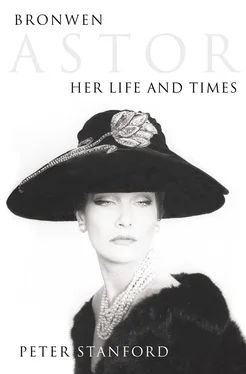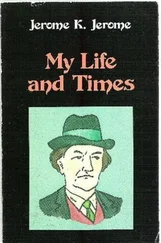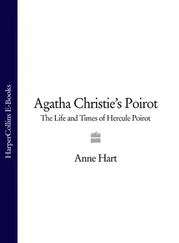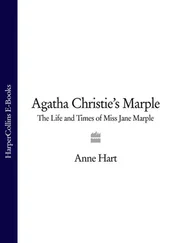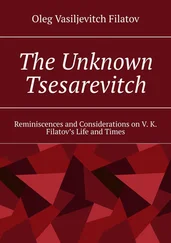1 ...8 9 10 12 13 14 ...25 For some, notably the eighteenth-century painter Richard Wilson, this was a lyrical and romantic landscape to be celebrated, but after the familiar, crowded, urban environment of Hampstead, with its trees, buses and tamed Heath, north-west Wales must have seemed an alien territory to nine-year-old Bronwen Pugh. This empty and usually rain-swept wilderness was a day’s journey by train from London. A specially designated coach for Dr Williams’ girls took her, chaperoned by her older sister Gwyneth, now one of the seniors at the school, plus other boarders, from the capital up to Ruabon Junction, over the border from Shrewsbury, where they changed on to a now abandoned branch line which snaked through the mountains before descending to the coast via Dolgellau. At the station – now a second-hand clothes shop – they were met and then marched uphill the mile or so to the school building. Trunks had been sent on ahead. Each girl brought only a small overnight bag. It was a spartan start to a spartan life.
The Pughs were remarkably relaxed about their young daughters undertaking what to any parent today would seem an epic and dangerous voyage. At least Bronwen had an older sister with her who knew the ropes. When Ann first went to the school, her mother accompanied her for just half the journey and then left her in the care of the guard. Independence was learnt at an early age. Parental visits to the school were permitted just once a-term and often only their mother came. During the war years, even these dried up. Though Kathleen Pugh had initially put up some opposition to shipping her daughters off to north-west Wales – she would have preferred a more standard girls’ boarding school at Felixstowe – she bowed to her husband’s wishes and the couple, as ever, presented a united front.
The distance from London was so great that any term-time trips back to the capital were out of the question. During the war years Wales was Bronwen’s principal home. Though her father had drilled her Welsh roots into her, young Bronwen had little other experience of the country than that gleaned over a Hampstead breakfast table. Family holidays, in deference to her mother’s wishes, had been taken on farms in Suffolk or at Bognor with Bella Wells.
To describe Dr Williams’ as ‘home’ would be to create a false impression of comfort. It was cold, often damp and the food was no better than adequate. Wartime shortages meant a restricted and meagre diet in the communal dining room. ‘On Fridays, the cook would always produce something the girls called “lucky dip”,’ recalls Margaret Braund, a member of staff from 1944 to 1948. ‘It was basically bread and butter pudding but with whatever else was left over and lying round the kitchen – bits of sandwich, sausages, even a nail once, I think. They hated it and it was truly awful.’
Each day pupils changed seats and eventually table to a predetermined pattern to ensure that they all mixed, under strict supervision. ‘It was regimented,’ Ann recalls, ‘but for me at least it afforded a sense of confidence because you always knew what was going to happen.’ Boarders slept in six- or seven-girl dormitories-or ‘dorm-ies’ – and were again regularly moved round to prevent schoolgirl crushes. Some of the seniors were housed off site in Pen-y-Coed , a building halfway up the hill that faces the school. It was also home to the younger members of staff and therefore had a more relaxed atmosphere.
Sickness was dealt with robustly – a good gargle of Dettol was regarded as enough to put most ailments right. Morning bell rang at seven. There was a quick wash in cold water, with baths strictly by rota once a week. And then on with the uniform. For summer there was a navy tunic, a green and white striped blazer, with green poplin blouse and straw hat; for winter, the same blazer but a green viyella blouse and navy blue velour hat. (The straw hats reputedly were excellent for sifting for gold in the streams around Dolgellau, home then to one of Britain’s few gold mines.) At the weekend it was a thick velvet or shantung green dress, depending on the season.
The Pughs were all put in Cader house, one of the six groupings into which the 300 or so pupils were divided. There were rules, with order marks for good behaviour contributing to honours for one’s house. And there was little indulgence. ‘No magazines or comic papers are to be sent to girls at school,’ stipulated a set of rules sent to the Pughs in 1939, ‘with the exception of the Girl’s Own paper and Riding and Zoo. Permission must be obtained from the headmistress for any other magazine which parents may think suitable.’ The handbook went on to specify that only fawn socks would be allowed, no heels, no garters and no fur trimmings on coats, which must be navy gabardine, lined and waterproof, in deference to the prevailing climate.
The school stands apart from the town. Today it is simply an accident of geography, but in Bronwen’s day the distance had a symbolic value. Town and gown were separate. Dolgellau has long been a bastion of the Welsh culture and Nonconformity. With its winding, narrow streets and grey local stone houses, it was one of the first constituencies to return a Plaid Cymru MP in 1974. Even back in 1939 it was represented by one of the rump of self-consciously Welsh Liberal MPs who followed Lloyd George to the bitter end. The neo-classical Salem Chapel of the Presbyterian Church of Wales, high on the hill above the tiny shopping centre, is still larger and better attended than the squat Anglican church of St Mary’s.
It was to St Mary’s, however, that the English boarders from Dr Williams’ trooped each Sunday for morning service. Alun Pugh may have wanted a Welsh education for his daughters, but despite being in Wales, endowed by a Welsh benefactor and including Welsh language lessons on the curriculum plus a Welsh hymn and an offering on the harp once a week at assembly, Dr Williams’ was effectively a little bit of England in exile. ‘In those days it was as Welsh as any suitable school for us could have got,’ estimates Ann, ‘but that wasn’t saying a great deal.’
In line with its charitable purposes, in addition to its boarders like the Pughs, Dr Williams’ admitted a number of local day girls – around 20 per cent of the total – but these locals remained marginal to the ethos of the school. They were mainly Welsh-speakers – several from hill farms high above Dolgellau – and outside of lessons tended to stick together. Displays of Welsh patriotism were rare enough to merit a special mention. When Bronwen enrolled as a girl guide in November 1942, she told her father: ‘I hope this will console you N’had, *we are having a Welsh dragon on our shoulders to show that we are Welsh guides and not English.’
Most of the teachers and boarders came from across the border, the majority of the latter from well-to-do Midlands families, attracted by the school’s reputation as quietly progressive. If it was not particularly Welsh, Dr Williams’ did have a name for enlightened attitudes. When Bronwen arrived, its character had been moulded for many years by headteacher Constance Nightingale, who was herself drawn to Quaker ideas and who had established a regime with no corporal punishment and none of the decorum, deportment and decorating lessons that dominated many girls’ boarding schools at this time. She aimed to turn out young women with self-confidence and self-awareness, not debutantes. Persuasion rather than force ensured the smooth running of Dr Williams’ and the pupils, in an age when marriage and children were still regarded as the pinnacle of female ambitions, were encouraged to excel in whatever field attracted them – academic work, sports or, if they wanted, domestic science. The atmosphere was not competitive. There was, for example, no attempt to draw up ‘class positions’ at the end of term to denote the cleverest in the form and to encourage competition.
Читать дальше
